Calcium Hydroxylapatite Surgery
Hydroxylapatite, also called hydroxyapatite (HA), is a naturally occurring mineral form of calcium apatite with the formula Ca5(PO4)3(OH), but is usually written Ca10(PO4)6(OH)2 to denote that the crystal unit cell comprises two entities. Hydroxylapatite is the hydroxyl endmember of the complex apatite group. The OH- ion can be replaced by fluoride, chloride or carbonate, producing fluorapatite or chlorapatite. It crystallizes in the hexagonal crystal system. It has a specific gravity of 3.08 and is 5 on the Mohs hardness scale. Pure hydroxylapatite powder is white. Naturally occurring apatites can, however, also have brown, yellow, or green colorations, comparable to the discolorations of dental fluorosis.
Up to fifty percent of bone is made up of a modified form of the inorganic mineral hydroxylapatite (known as bone mineral). Carbonated calcium-deficient hydroxylapatite is the main mineral of which dental enamel and dentin are comprised. Hydroxyapatite crystals are also found in the small calcifications (within the pineal gland and other structures) known as corpora arenacea or 'brain sand'
Calcium-based microspheres are suspended in a water-based gel to form calcium hydroxylapatite. This dermal filler was first used in dentistry and reconstructive surgery and has a long safety record.
Like some of the other semi-permanent dermal fillers, calcium hydroxylapatite contains small particles that act as a scaffold. Your own collagen then grows on that scaffold. Over time, the particles are slowly dissolved into calcium and phosphate ions through normal metabolic processes.
Calcium hydroxylapatite is biosynthetically produced, which means that no animals or animal products are used. This lowers your risk of an allergic reaction and no skin testing is required.
This type of dermal filler is known to produce a very natural result, doesn't migrate, and side effects are rare.
Calcium hydroxylapatite has another, special use for HIV-positive people who suffer from facial lipoatrophy, also known as facial wasting, which is a side effect of antiretroviral medications.
PURPOSE: To describe a novel method using injectable calcium hydroxylapatite (Radiesse) for aesthetic correction of small bony defects in the skull.
METHODS: A prospective, small interventional case series was performed. Three patients were identified with bony defects of the frontal bone from prior trauma or surgery. Calcium hydroxylapatite filler was injected locally to fill the bony defects. The procedure was performed in an ambulatory surgical center with monitored anesthesia care in conjunction with eyelid surgery.
RESULTS: Three patients were treated with 1 to 3 vials (1.3-ml vial) of injectable calcium hydroxylapatite with improvement of volume deficiency and cosmesis. There were no complications associated with the procedure. Follow-up ranged from 2 months to 7 months.
CONCLUSIONS: This preliminary report demonstrates that injectable calcium hydroxylapatite filler provides a new, simple, semipermanent technique for aesthetic correction of small bony defects in the skull. The amount of volume replacement is easily titrated, and the procedure can be repeated if necessary until adequate volume is obtained. Although these cases were performed in a surgery center, the technique could easily be done as an office procedure with local anesthesia. A larger cohort and longer follow-up is necessary to establish the duration of effect and success of the procedure.





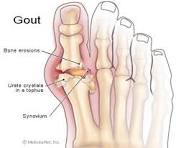
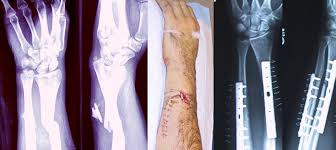
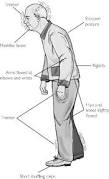
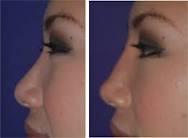



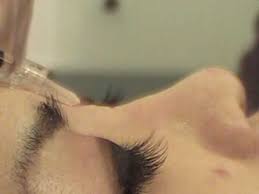






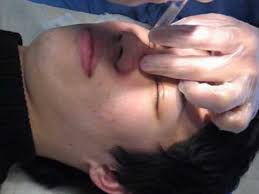
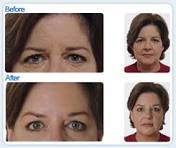
Up to fifty percent of bone is made up of a modified form of the inorganic mineral hydroxylapatite (known as bone mineral). Carbonated calcium-deficient hydroxylapatite is the main mineral of which dental enamel and dentin are comprised. Hydroxyapatite crystals are also found in the small calcifications (within the pineal gland and other structures) known as corpora arenacea or 'brain sand'
Here's how it works
Calcium hydroxylapatite is the heaviest of facial dermal fillers. This substance, which is found naturally in human bones, is a mineral-like compound. It's often used to fill the moderate-to-severe creases such as nasolabial folds, marionette lines and frown lines. It's also used to enhance fullness of the cheeks and other facial contours.Calcium-based microspheres are suspended in a water-based gel to form calcium hydroxylapatite. This dermal filler was first used in dentistry and reconstructive surgery and has a long safety record.
Like some of the other semi-permanent dermal fillers, calcium hydroxylapatite contains small particles that act as a scaffold. Your own collagen then grows on that scaffold. Over time, the particles are slowly dissolved into calcium and phosphate ions through normal metabolic processes.
Calcium hydroxylapatite is biosynthetically produced, which means that no animals or animal products are used. This lowers your risk of an allergic reaction and no skin testing is required.
This type of dermal filler is known to produce a very natural result, doesn't migrate, and side effects are rare.
Calcium hydroxylapatite has another, special use for HIV-positive people who suffer from facial lipoatrophy, also known as facial wasting, which is a side effect of antiretroviral medications.
PURPOSE: To describe a novel method using injectable calcium hydroxylapatite (Radiesse) for aesthetic correction of small bony defects in the skull.
METHODS: A prospective, small interventional case series was performed. Three patients were identified with bony defects of the frontal bone from prior trauma or surgery. Calcium hydroxylapatite filler was injected locally to fill the bony defects. The procedure was performed in an ambulatory surgical center with monitored anesthesia care in conjunction with eyelid surgery.
RESULTS: Three patients were treated with 1 to 3 vials (1.3-ml vial) of injectable calcium hydroxylapatite with improvement of volume deficiency and cosmesis. There were no complications associated with the procedure. Follow-up ranged from 2 months to 7 months.
CONCLUSIONS: This preliminary report demonstrates that injectable calcium hydroxylapatite filler provides a new, simple, semipermanent technique for aesthetic correction of small bony defects in the skull. The amount of volume replacement is easily titrated, and the procedure can be repeated if necessary until adequate volume is obtained. Although these cases were performed in a surgery center, the technique could easily be done as an office procedure with local anesthesia. A larger cohort and longer follow-up is necessary to establish the duration of effect and success of the procedure.






0 comments:
Post a Comment